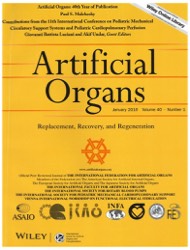Single Pass Albumin Dialysis – Dose finding study

Aim of these studies was to define the optimal conditions for SPAD in a standardized experimental set-up. Albumin concentration was adjusted to either 1%, 2%, 3%, or 4%, while the flow rate of the dialysate was kept constant at a speed of 700 ml/h. The flow rate of the dialysate was altered between 350, 500, 700, and 1000 ml/h, whereas the albumin concentration was continuously kept at 3%.
This study revealed that the detoxification of albumin bound substances could be improved by increasing the concentration of albumin in the dialysate with an optimum at 3%. A further increase of the albumin concentration to 4% did not lead to a significant increase in detoxification. Furthermore, we observed a gradual increase of the detoxification efficiency for albumin bound substances, from 350 ml/h to 700 ml/h (for bilirubin) or 1000 ml/h (for bile acids) of dialysate flow. Water-soluble toxins (ammonia, creatinine, urea, uric acid) were removed almost completely, regardless of albumin concentration or flow rate.

